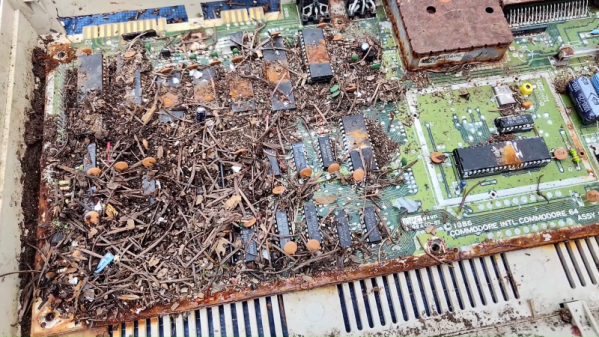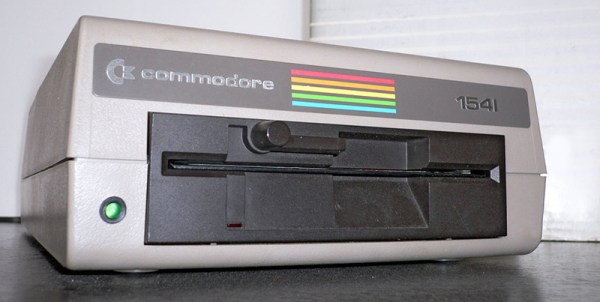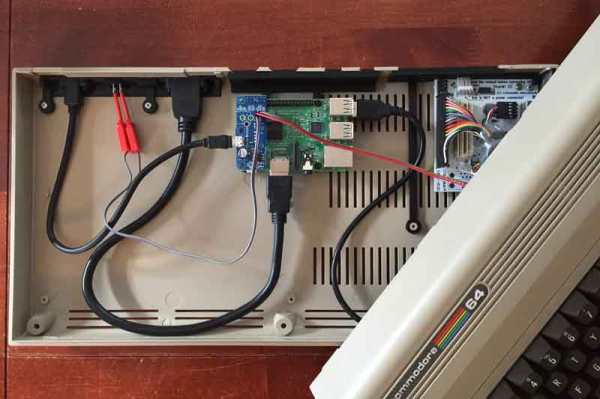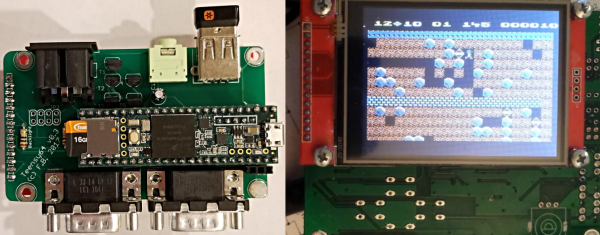Retro hardware is getting harder and harder to come by, with accessories such as joysticks and mice dropping out of the market the fastest. So if your old machine needs a new joystick, you may find yourself whipping it up yourself. While you’re at it, you might as well have some fun as [Tom Tilley] did when he built a C-64 joystick inside a replica disk drive case for his rare SX-64 luggable.
Anyone who remembers the amount of desk space the classic Commodore 1541 disk drive occupied might wonder why someone would want such an enormous base for a joystick. But rest assured that no actual 1541s were harmed in the making of this joystick; rather, [Tom] created a smaller replica of the drive case from MDF. The face of the case is about 80% original size, and the depth is cut down to about half the original, so the joystick actually ends up being a manageable size while offering a nice, broad wrist support. The drive door is 3D-printed and painted, and adorned with the original green and red LEDs. Decorations like the front badge and even replicas of the original rear panel labels, connectors, and switches were printed from files off a website devoted to recreating Commodore hardware from paper. Because Commodore love knows no bounds.
It’s silly, but it works, and we love the attention to detail. Hat’s off to [Tom] for not settling for yet another joystick build, and for keeping the Commodore flame burning. They may be tough machines, but they won’t be around forever.
Continue reading “Custom Joystick For An Old Commodore Finds An Unlikely Home”


















